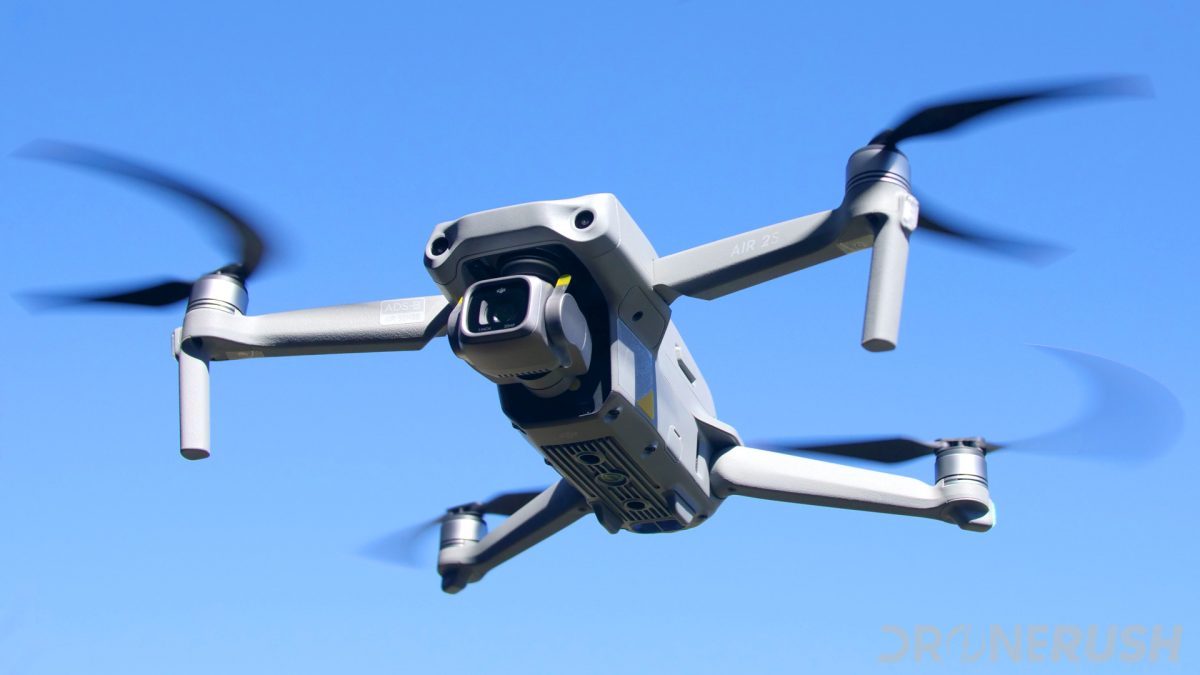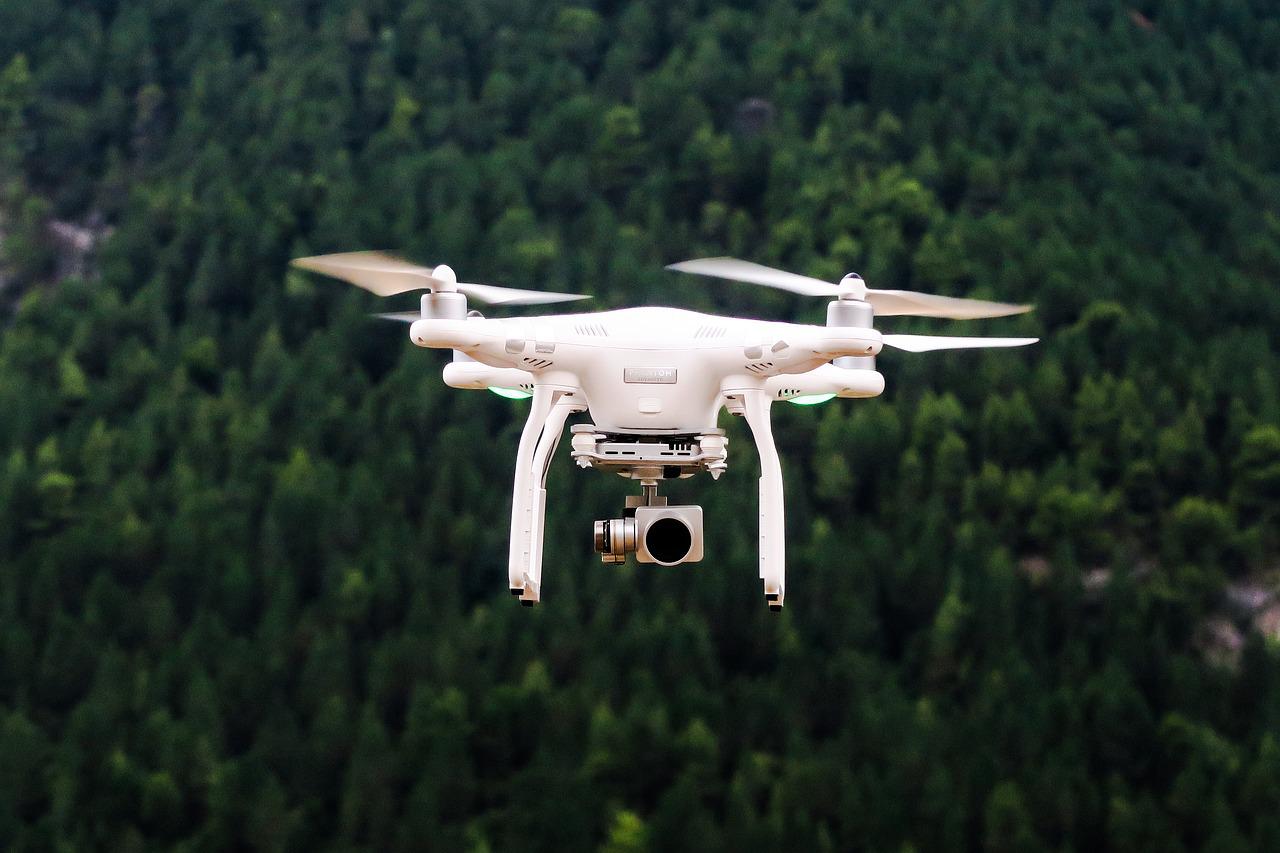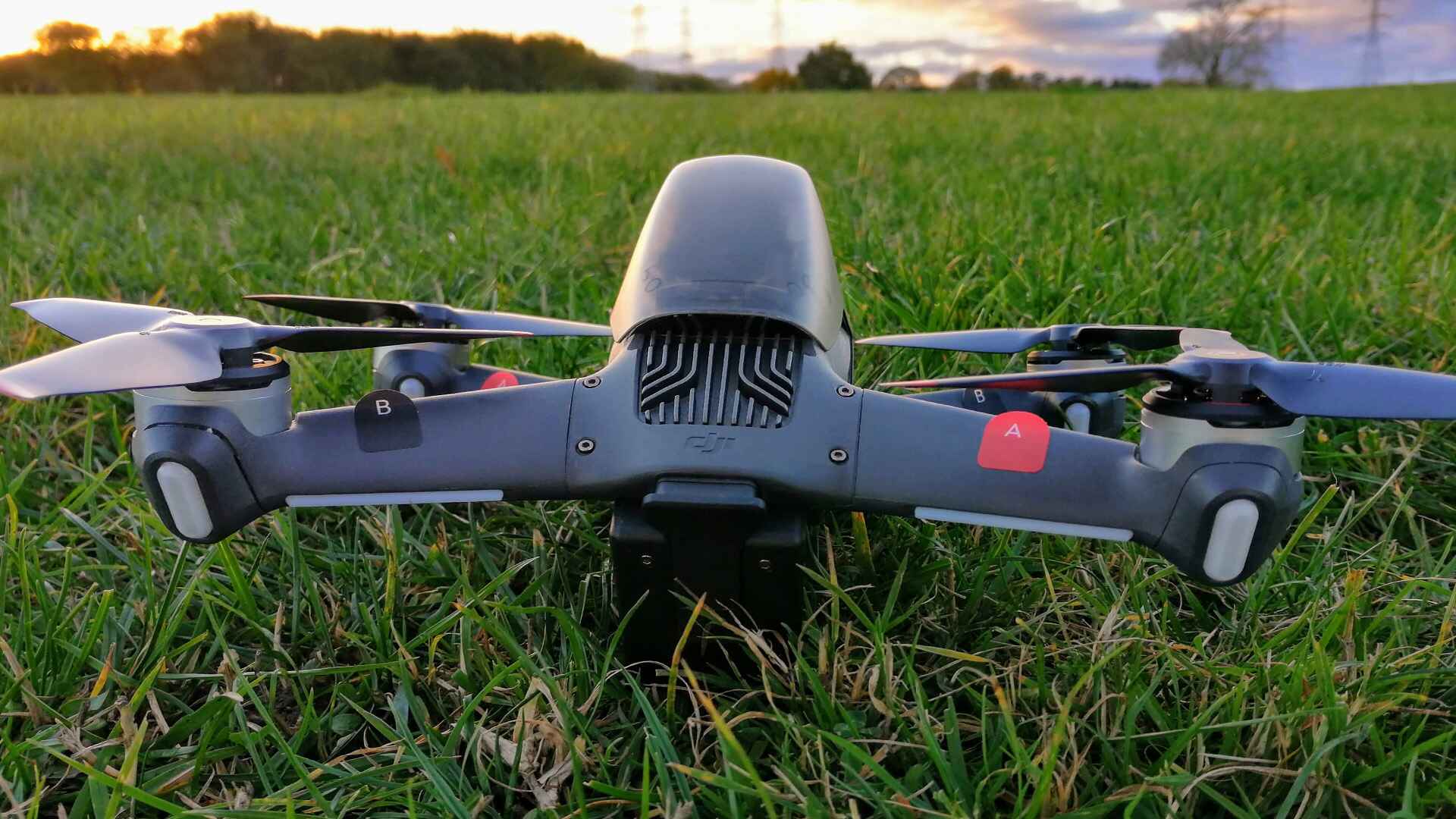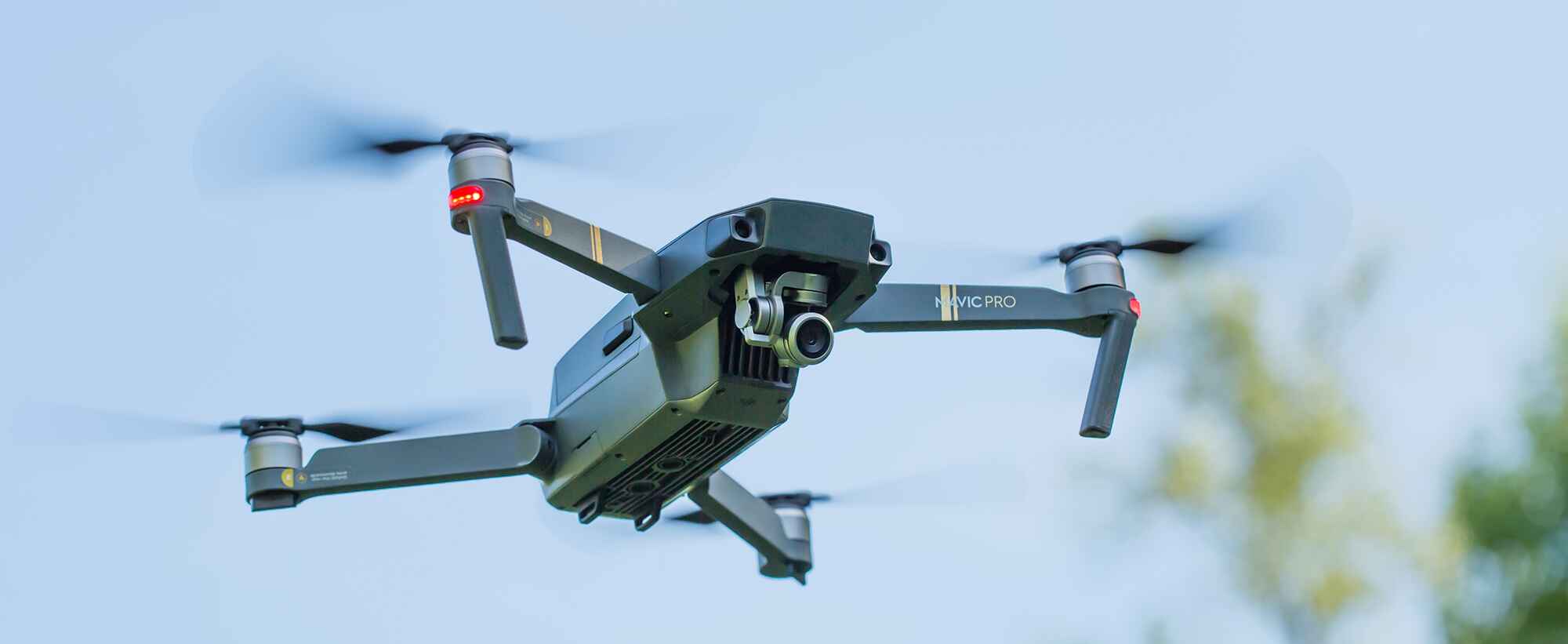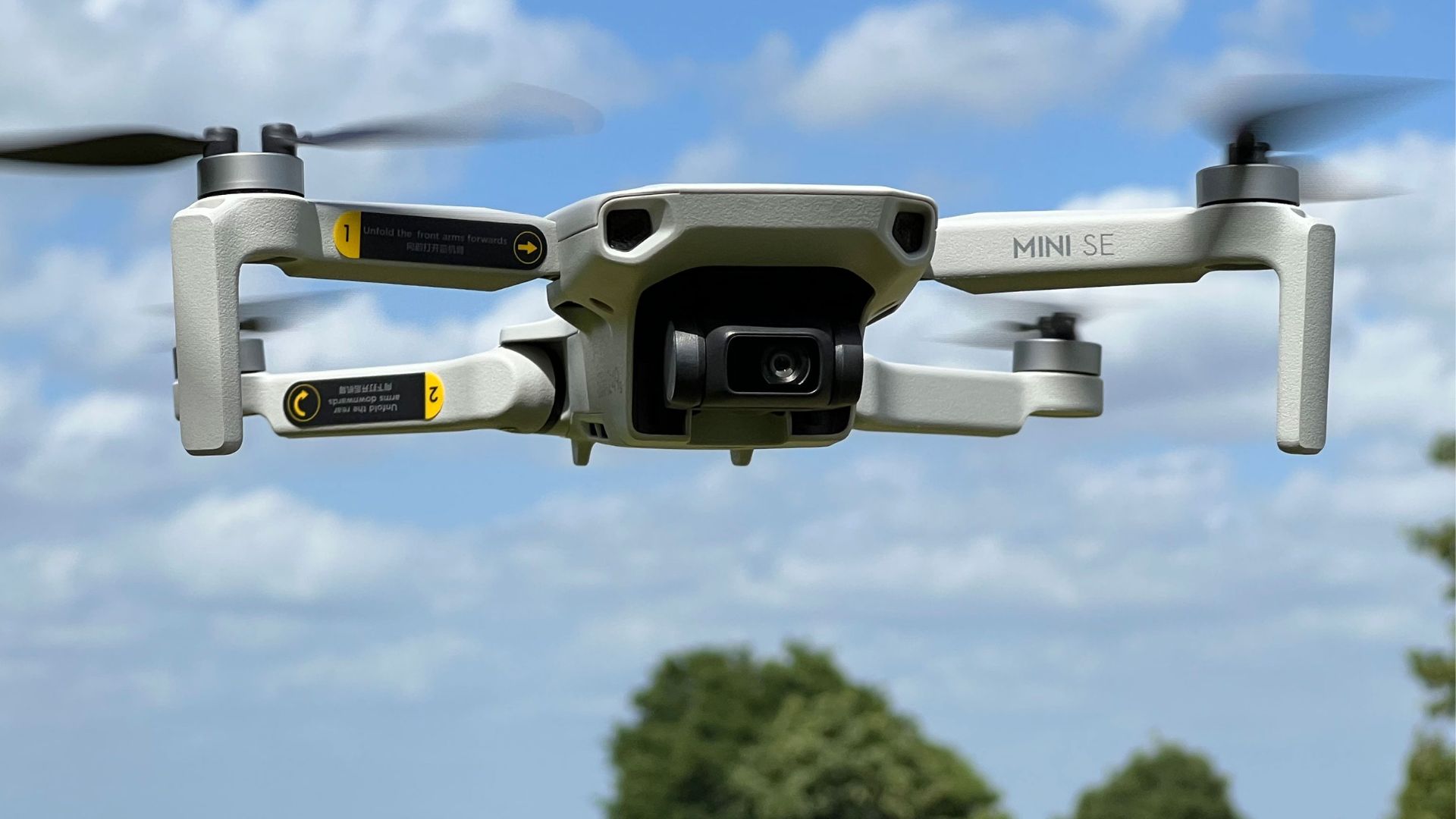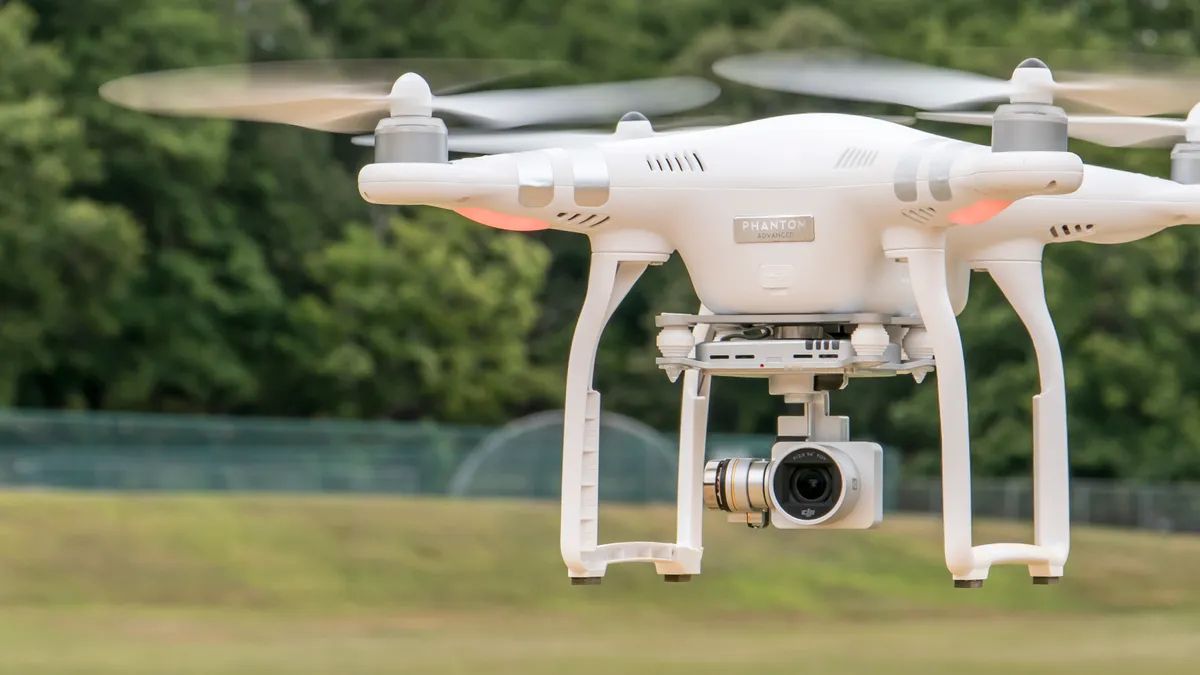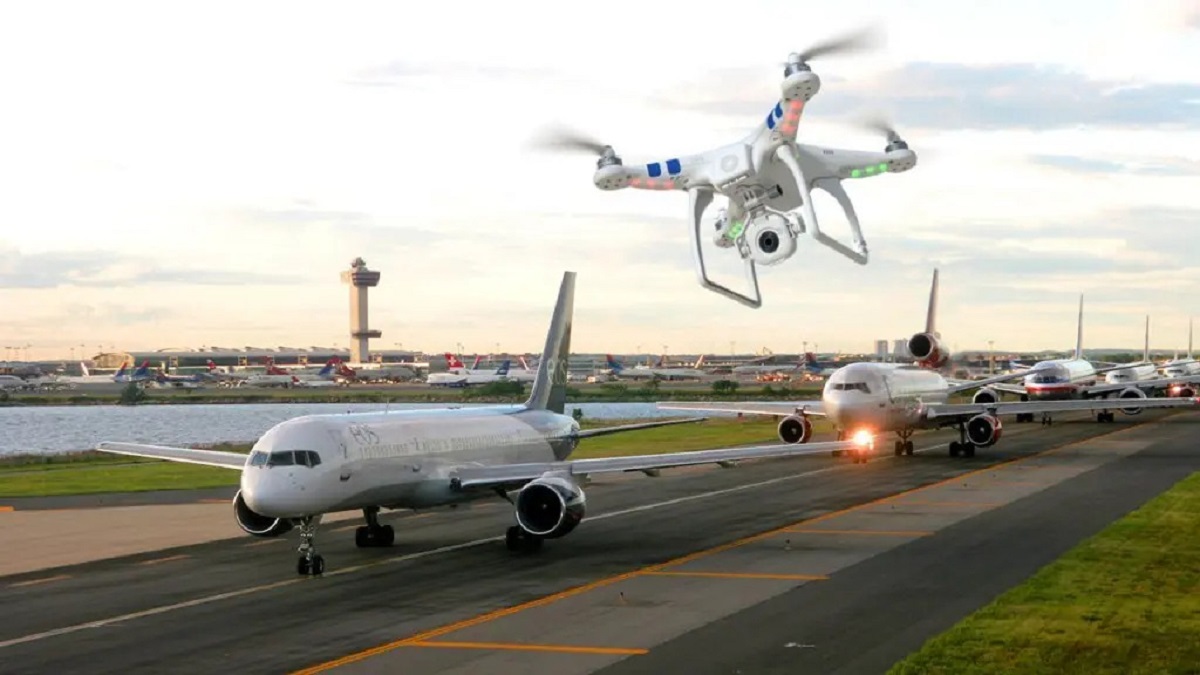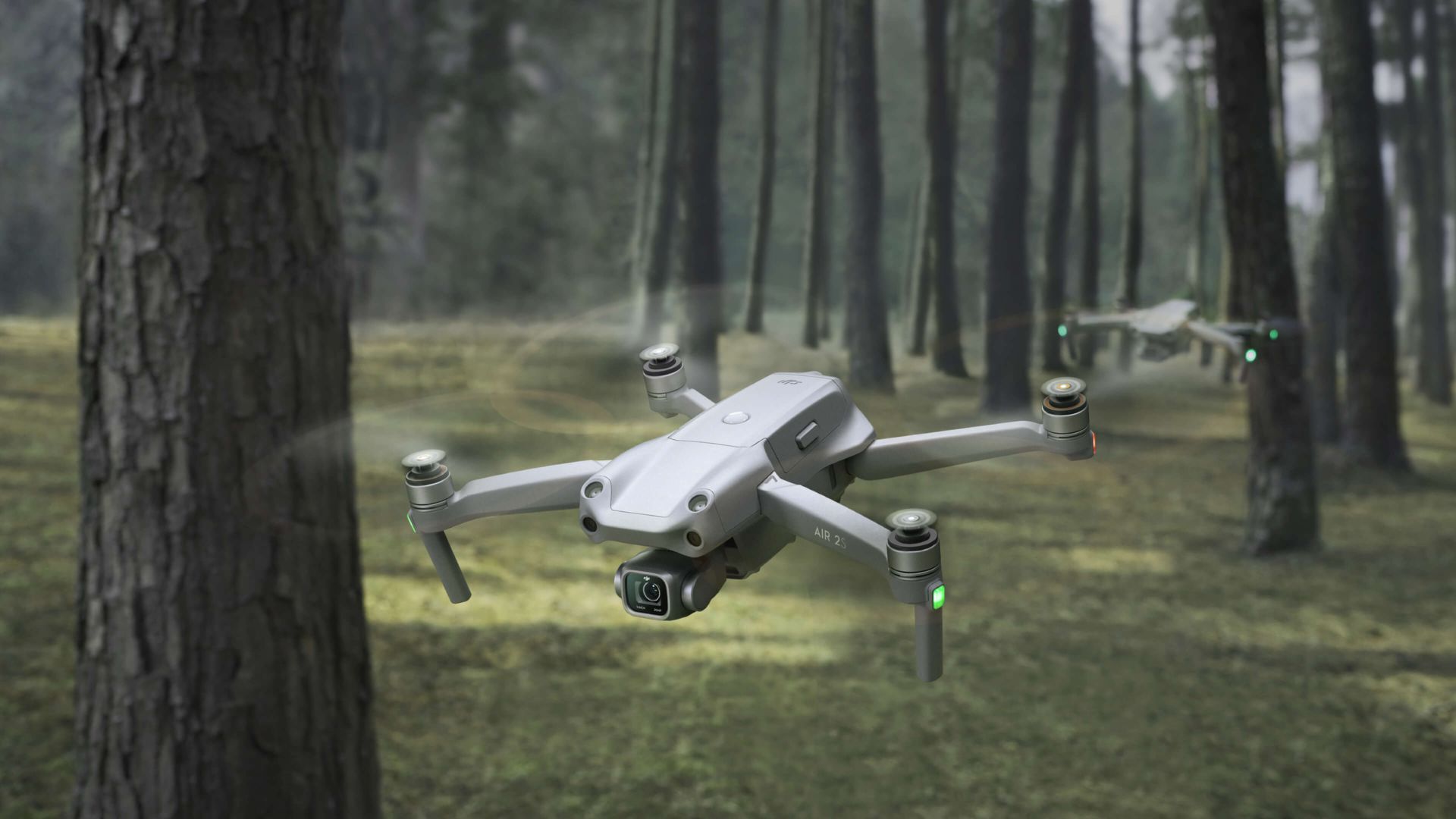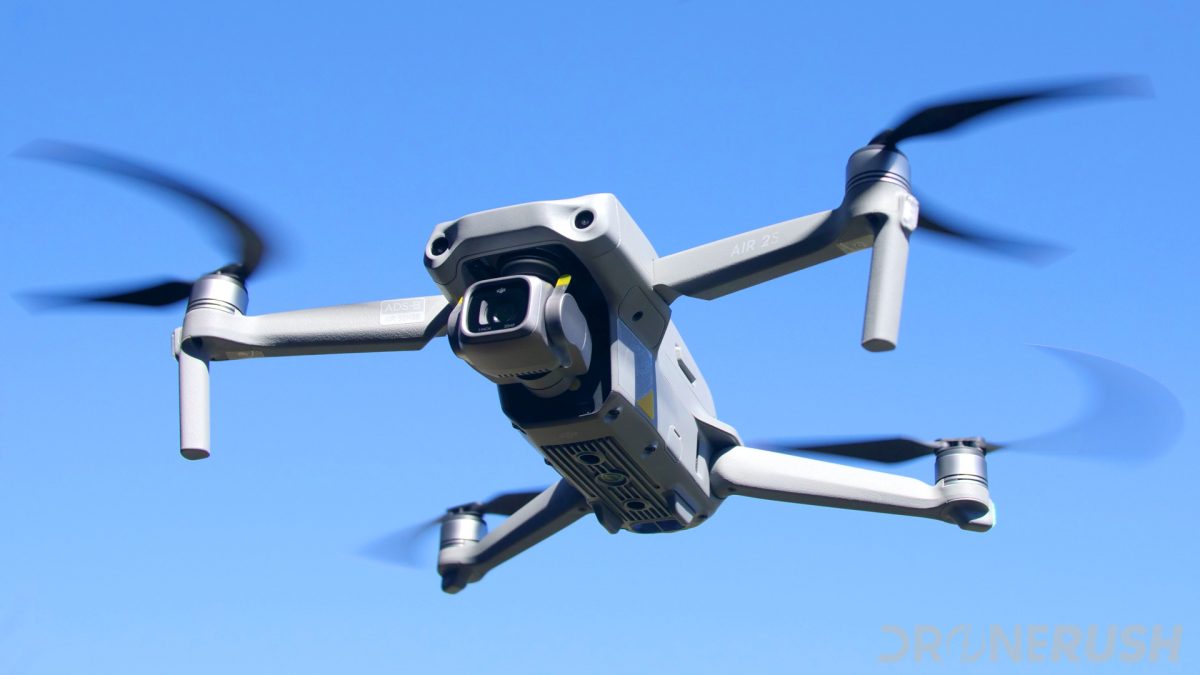Introduction
Welcome to the exciting world of drones, where the possibilities of aerial exploration and videography are boundless. Drones have revolutionized various industries, from photography and cinematography to agriculture and surveying. One of the key considerations when operating a drone is understanding how far it can fly. The range of a drone can significantly impact its usability and the tasks it can perform.
When it comes to determining a drone’s range, several factors come into play. It’s not just about the specifications mentioned by the manufacturer; real-life scenarios and conditions can influence the actual distance a drone can cover. In this article, we will explore these factors and provide you with valuable insights on maximizing your drone’s range.
From battery capacity and remote control range to line of sight and weather conditions, all of these elements work together to determine how far a drone can fly. Additionally, drone regulations and legal limitations in your area may also impact the range you can achieve.
Understanding these factors will not only help you make informed decisions about drone flights but will also assist in optimizing your drone’s performance. So, let’s dive into the intricacies of drone range and explore how you can make the most out of your aerial adventures.
Factors that Affect the Range of a Drone
When it comes to determining the range of a drone, there are several crucial factors that come into play. Understanding these factors will help you optimize your drone’s range and ensure a successful flight. Let’s explore the key elements that can affect the range of a drone:
- Battery Capacity and Flight Time: The battery capacity of a drone directly affects its flight time and ultimately the range it can cover. Drones with larger battery capacities typically have longer flight times and can cover greater distances. It’s essential to invest in high-quality batteries and ensure they are fully charged before each flight to maximize your drone’s range.
- Remote Control Range: The range of the remote control or transmitter is another critical factor that affects the range of a drone. Most consumer drones have a specified range within which they can be controlled. It’s crucial to stay within this range to maintain a stable connection and avoid losing control of your drone.
- Line of Sight and Signal Interference: Maintaining a clear line of sight between the transmitter and the drone is vital for optimal communication and control. Obstacles such as buildings, trees, or even large crowds can interfere with the signal and limit the range of the drone. Flying in open areas with minimal obstructions can greatly enhance your drone’s range.
- Weather Conditions: Weather conditions such as high winds, rain, or extreme temperatures can significantly impact the range of a drone. Strong winds can push the drone off course and consume more battery power, while rain can damage the drone’s electronics. It’s important to check the weather forecast before flying and avoid unfavorable conditions that may limit your drone’s range.
- Drone Regulations and Legal Limitations: Drone regulations and legal limitations vary between countries and regions. Some areas may have restrictions on the maximum altitude and range a drone can fly. It is essential to familiarize yourself with the local regulations and ensure you adhere to them to avoid any legal consequences and ensure the safety of your flight.
By considering these factors, you can make informed decisions when it comes to flying your drone and maximize its range. In the next section, we will provide you with some tips on optimizing your drone’s performance and increasing its range. Stay tuned!
Battery Capacity and Flight Time
One of the most crucial factors that determine the range of a drone is its battery capacity and flight time. The battery capacity directly correlates with how long the drone can stay in the air, which ultimately affects the distance it can cover.
Different drones have varying battery capacities, typically measured in milliampere-hours (mAh). Drones with higher battery capacities can provide longer flight times and cover greater distances. Before your flight, it’s essential to ensure that your drone’s batteries are fully charged to maximize its range.
It’s worth noting that flight time can be influenced by various factors, including the drone’s weight, flying speed, and payload. Heavier drones or those carrying additional equipment may consume more power and have shorter flight times compared to lighter, more agile counterparts.
Additionally, flight time can be affected by the flight mode you choose to fly in. Many drones have different flight modes such as normal mode, sport mode, or beginner mode. Sport mode, for example, may enhance the drone’s agility and speed but can reduce flight time due to increased power consumption.
In order to optimize the battery capacity and flight time of your drone, consider the following tips:
- Invest in high-quality batteries: Purchase batteries from reputable manufacturers or from the drone’s original equipment manufacturer (OEM) to ensure reliability and performance.
- Carry spare batteries: Having extra fully charged batteries on hand will allow you to have extended flight sessions and cover more ground.
- Avoid excessive payload: If possible, avoid carrying unnecessary additional equipment or payloads that may increase the weight and drain the battery faster.
- Practice efficient flight techniques: Smooth and controlled flying techniques, such as avoiding abrupt movements or unnecessary maneuvers, can help conserve battery power and extend flight time.
- Monitor battery levels during flight: Keep an eye on your drone’s battery levels and return to the landing area in a timely manner to prevent a sudden loss of power mid-flight.
By following these tips and being mindful of your drone’s battery capacity and flight time, you can optimize its range and make the most out of your aerial adventures.
Remote Control Range
The range of the remote control or transmitter is a critical factor that determines how far a drone can fly. Most consumer drones have a specified range within which they can be controlled effectively. However, it’s essential to understand that the actual range you can achieve may vary due to several factors.
Firstly, the quality and capabilities of the remote control system can influence the range. Drones with higher-end transmitters often offer extended control ranges compared to entry-level or budget-friendly models. Investing in a reliable and high-quality remote control system can potentially enhance the range of your drone.
Secondly, signal interference can have a significant impact on the range of the drone. Wireless signals from routers, mobile phones, and other electronic devices can disrupt the communication between the drone and the remote control, reducing the range. It’s crucial to fly your drone in areas with minimal signal interference to maintain a stable connection and maximize range.
Moreover, obstructions such as buildings, trees, or even large crowds can affect the range of the drone. A clear line of sight between the transmitter and the drone is essential for optimal communication and control. Flying in open areas without obstructions allows the signal to travel more freely, extending the range of your drone.
To optimize the remote control range of your drone, consider the following tips:
- Fly in open areas: Choose locations with minimal obstructions to ensure a clear and uninterrupted line of sight between the transmitter and the drone.
- Avoid signal interference: Fly your drone away from areas with strong wireless signals or electromagnetic interference to reduce signal disruptions.
- Upgrade your remote control system: Consider investing in a higher-end transmitter with better range capabilities to extend the control distance of your drone.
- Use a signal booster: Signal boosters or range extenders can amplify the signal strength of your remote control, allowing for greater range coverage.
- Follow manufacturer guidelines: Always refer to the manufacturer’s guidelines and recommendations regarding the remote control range of your drone to ensure safe and optimal operations.
By considering these tips and taking measures to optimize the remote control range, you can expand the flying range of your drone and explore new horizons.
Line of Sight and Signal Interference
Maintaining a clear line of sight between the transmitter and the drone is vital for optimal communication and control. The line of sight refers to the unobstructed visual connection between the operator and the drone. When flying a drone, it’s important to have a clear view of the aircraft to ensure safe and effective operations.
Obstructions such as buildings, trees, or even large crowds can hinder the line of sight and limit the range of the drone. When flying in urban areas or areas with dense vegetation, it’s crucial to carefully plan your flight path to avoid signal disruptions and maintain a stable connection.
In addition to physical obstructions, signal interference can also impact the range and control of the drone. Wireless signals from routers, mobile phones, and other electronic devices can interfere with the communication between the remote control and the drone, leading to a weakened signal and reduced range.
To optimize line of sight and mitigate signal interference, consider the following tips:
- Fly in open areas: Choose wide-open spaces, such as parks or fields, without tall buildings or trees, to ensure an unobstructed line of sight.
- Avoid crowded areas: Fly your drone away from crowded areas, as large groups of people can disrupt the signal and affect the range.
- Position yourself strategically: Stand in a location that provides a clear and unobstructed view of the drone, ensuring a strong and consistent signal.
- Minimize wireless signal sources: Reduce the use of wireless devices in the vicinity of your flight area to minimize signal interference.
- Fly at a higher altitude: Flying at higher altitudes can enhance the line of sight and reduce the chances of signal interference from ground-level obstacles.
By being mindful of the line of sight and taking measures to minimize signal interference, you can optimize the range and control of your drone during flight operations.
Weather Conditions
Weather conditions play a significant role in determining the range and overall flight capabilities of a drone. It’s essential to consider the weather before taking your drone into the skies to ensure a safe and successful flight.
Strong winds can significantly impact the range of a drone. Strong gusts can push the drone off course, making it difficult to maintain control and consume more battery power. It’s crucial to check the wind conditions before flying and avoid flying in excessively windy conditions to maintain stability and maximize range.
Rain and moisture can also affect the range and performance of your drone. Water damage to the drone’s electronics can lead to malfunction or even complete failure. It’s important to avoid flying in rainy conditions to protect your drone and ensure its longevity.
Extreme temperatures can also impact the range of your drone. In colder temperatures, the battery performance may be reduced, leading to shorter flight times and reduced range. On the other hand, excessively hot weather can cause the drone’s components to overheat, potentially damaging the hardware. It’s crucial to be aware of the temperature conditions and ensure proper battery management in extreme weather situations.
To optimize your drone’s performance in various weather conditions, consider the following tips:
- Check the weather forecast: Before each flight, check the local weather forecast to assess the wind speed, precipitation, and temperature.
- Avoid flying in strong winds: Fly your drone in calm weather conditions and avoid flying during times of high wind speeds to maintain stability and prolong flight time.
- Avoid rainy or wet conditions: Keep your drone grounded during rain or wet weather to prevent water damage to the internal components and ensure the longevity of your aircraft.
- Manage battery properly in extreme temperatures: In cold weather, pre-warm the batteries before flight and monitor their performance. In hot weather, give the drone a rest between flights to prevent overheating.
- Consider weather-resistant drones: If you plan to fly in challenging weather conditions, consider investing in a drone with weather-resistant features to enhance its durability and performance.
By following these guidelines and being mindful of the weather conditions, you can optimize your drone’s range, ensure its safety, and enjoy successful flights in various environmental situations.
Drone Regulations and Legal Limitations
When operating a drone, it’s crucial to understand and comply with the drone regulations and legal limitations in your area. Different countries and regions have specific rules and restrictions that govern the use of drones, including limitations on the maximum altitude, flight range, and areas where drones can be flown.
These regulations are in place to ensure the safety and privacy of individuals, as well as the security of airspace. Failure to adhere to these regulations can lead to legal consequences and put others at risk.
It’s important to familiarize yourself with the specific regulations in your location before flying your drone. Some common rules and limitations include:
- Maximum Altitude: Many countries have set specific altitude limits for drone flights, typically ranging from 120 to 400 feet. Ensuring that you stay within these altitude limits will help you avoid any potential conflicts with manned aircraft.
- Restricted Areas: There may be designated no-fly zones, such as airports, military bases, or government facilities. It’s essential to respect these restricted areas and avoid flying your drone in these locations to prevent any endangerment or privacy violations.
- Registration and Licensing: Some countries require drone operators to register their drones and obtain a license or permit. Be sure to fulfill any registration or licensing requirements and carry the necessary documentation whenever you fly.
- Real-time ID Broadcasting: In certain regions, drones may be required to broadcast their identification information in real-time. This helps authorities identify and track drones during flight.
- Privacy Considerations: It’s important to respect the privacy of individuals when flying a drone. Avoid flying over private property without permission and be mindful of capturing images or recordings that may infringe upon someone’s privacy rights.
To ensure compliance with drone regulations and legal limitations, consider the following steps:
- Research the regulations: Familiarize yourself with the drone regulations specific to your country or region, including any updates or changes to the laws.
- Join drone communities/organizations: Engage with local drone communities or organizations to stay up-to-date on the latest regulations and guidance from experienced operators.
- Follow manufacturer guidelines: Adhere to the manufacturer’s guidelines and recommendations regarding the safe and legal operation of your specific drone model.
- Stay informed about airspace restrictions: Check local airspace restrictions, temporary flight restrictions (TFRs), and any other relevant information before planning your flight.
- Obtain necessary permits or licenses: If required, complete any registration or licensing processes to legally operate your drone in your area.
By understanding and complying with drone regulations and legal limitations, you can ensure safe, responsible, and lawful drone flights while maximizing the range and enjoyment of your drone.
Tips for Maximizing Drone Range
If you’re looking to maximize the range of your drone and explore new horizons, there are several tips and techniques you can follow. These strategies will help you optimize your drone’s performance and extend its flight range. Here are some valuable tips for maximizing your drone’s range:
- Choose an optimal location: Fly your drone in open areas with minimal obstructions, such as parks or large fields. This will provide a clear line of sight and reduce the chances of signal interference, allowing your drone to cover greater distances.
- Ensure a clear line of sight: Maintain a direct line of sight between your drone and the remote control at all times. Avoid flying behind obstacles or buildings that may obstruct the signal and limit the range.
- Fly in favorable weather conditions: Aim to fly your drone in calm weather conditions with minimal wind. Wind can affect the drone’s stability and consume more battery power, ultimately reducing the range.
- Monitor battery levels: Keep a close eye on your drone’s battery levels during flight. Return to the landing area when the battery starts to reach low levels to prevent a sudden loss of power while in the air.
- Invest in quality batteries: Use high-quality batteries that are specifically designed for your drone model. Well-made batteries will provide optimal performance and longer flight times.
- Minimize payload: If possible, avoid excessive payloads or additional equipment that may increase the weight of your drone. Heavier drones consume more power and tend to have shorter flight times and reduced range.
- Practice efficient flying techniques: Smooth and controlled flying techniques, such as avoiding unnecessary maneuvers or abrupt movements, can help conserve battery power and extend flight time.
- Upgrade your transmitter: Consider investing in a higher-end transmitter with better range capabilities. A more powerful transmitter can enhance the control distance and improve the range of your drone.
- Stay within legal limits: Familiarize yourself with the drone regulations and legal limitations in your area. Adhere to the rules and restrictions to ensure safe and legal operations while maximizing your drone’s range.
- Keep your drone well-maintained: Regularly check and maintain your drone to ensure it’s in optimal condition. Clean the propellers, check the connections, and perform firmware updates as recommended by the manufacturer.
By implementing these tips, you can maximize your drone’s range and enjoy longer flights with extended distances. Remember to always prioritize safety and adhere to local regulations and guidelines for a seamless and enjoyable drone flying experience.
Conclusion
Understanding the factors that affect the range of a drone is essential for any drone enthusiast or operator. By considering battery capacity and flight time, remote control range, line of sight and signal interference, weather conditions, and drone regulations, you can optimize your drone’s range and maximize its performance.
Ensuring that your drone’s batteries are fully charged, flying in open areas with minimal obstructions, and avoiding signal interference can significantly enhance your drone’s range. Additionally, being mindful of weather conditions and complying with drone regulations and legal limitations will ensure safe and responsible operations.
Implementing the tips mentioned in this article, such as choosing optimal locations, monitoring battery levels, and practicing efficient flying techniques, will help you push the boundaries of your drone’s range and explore new aerial perspectives.
Remember, safety should always be your top priority. Stay informed about local rules and regulations, obtain necessary permits or licenses, and prioritize the security and privacy of others when flying your drone.
Now armed with this knowledge, go out and maximize the range of your drone while capturing breathtaking imagery, exploring new landscapes, and embarking on exciting aerial adventures.







